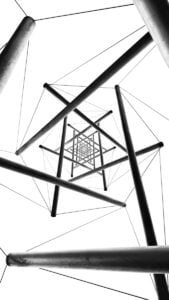Your opponent has just taken you to court, but there are irregularities in the proceedings. How can you exploit this loophole to your advantage? Procedural objections are a formidable weapon for delaying consideration of the merits of the case, or even for terminating the proceedings without any discussion of the dispute itself.
The different types of procedural exceptions
The Code of Civil Procedure defines a plea as a means "either to have the proceedings declared irregular or extinguished, or to suspend their course" (article 73). These strategic pleas are distinct from defences on the merits and grounds for dismissal.
The plea of lack of jurisdiction
The purpose of this exception is to challenge the jurisdiction of the court seised. It may concern:
- Jurisdiction (judicial court vs. commercial court)
- Territorial jurisdiction (Paris vs Lyon)
- International jurisdiction (French vs. foreign)
Article 75 of the Code of Civil Procedure requires that the grounds for this exception be set out in a "declinatory of jurisdiction". The court with jurisdiction must be specified.
Strategy: this exception offers a tactical advantage by delaying the examination of the dispute.
Objections of lis pendens and connexity
Litispendence arises when two courts are seised of the same dispute. Related actions arise when two separate cases are closely linked. In both cases, the aim is to avoid contradictory decisions.
Article 100 of the Code of Civil Procedure specifies that these exceptions can only succeed if both courts have equal jurisdiction.
Dilatory exceptions
These exceptions are designed to temporarily suspend the proceedings. Among the most common:
- Time limit for inventory and deliberation (heir)
- The benefit of discussion (guarantor)
- The "criminal holds civil" rule
As indicated in article 108 of the Code of Civil Procedure, these exceptions allow the litigant to obtain a legitimate respite.
Objections to nullity
They form the core of the system and fall into two categories:
- Invalidity for formal defectsThese concern irregularities in procedural documents (summons without mention of the time limit for appearance, absence of compulsory information, etc.).
- Invalidity on substantive groundsMore serious irregularities (article 117):
- Lack of capacity to sue or be sued
- Lack of authority of a party or a representative
- Lack of capacity or authority of a person representing the company in court
A firm without legal personality cannot be validly sued. This irregularity is grounds for nullity on substantive grounds.
Specific rules for exceptions
The in limine litis rule and simultaneity
Article 74 of the Code of Civil Procedure imposes strict discipline: objections must be raised "before any defence on the merits or plea of inadmissibility" and at the same time.
This rule is designed to avoid delaying tactics. Raising an objection after the merits of the case have been discussed means that it is inadmissible, even if the irregularity is serious.
Common pitfall: a writ of compulsory intervention constitutes a defence on the merits, which renders inadmissible any subsequent objection (Civ. 2e, 6 May 1999, no. 96-22.143).
Adjustments and exceptions to the rule
There are some relaxations to the rigour of the principle:
- In oral proceedings, pleadings filed before the hearing do not preclude the presentation of an objection at the hearing (Civ. 2e, 16 October 2003, no. 01-13.036).
- There are exceptions to this rule:
- The connexity exception
- The plea of nullity on grounds of substantive defect
These two exceptions may be raised in any event (articles 103 and 118).
- The cause of the exception may emerge late:
- A plea of nullity on formal grounds must be raised before any defence on the merits (article 112)
- The plea of lapse of time must be raised before "any other plea" (article 388)
Consequences of late presentation
The penalty for late submission is implacable: inadmissibility of the objection.
A strategy? First discuss the merits in subsidiary submissions, specifying that the exception is the principal plea. This technique is accepted in case law (Civ. 3e, 8 March 1977, no. 75-14.834).
Specific issues and developments
The arbitration agreement
The Court of Cassation has qualified the plea based on the existence of an arbitration clause as a plea of lack of jurisdiction (Com. 10 June 1986, no. 85-10.292), even though this qualification is disputed in legal doctrine.
Article 1448 of the Code of Civil Procedure confirms this approach by providing that the court must declare that it does not have jurisdiction when the dispute is covered by an arbitration agreement.
The division of powers within the judicial court
Since the merger of the tribunaux d'instance and the tribunaux de grande instance, a new mechanism has been in place to resolve conflicts of jurisdiction within the same court.
Article 82-1 of the Code of Civil Procedure establishes a specific procedure that is not technically a plea of lack of jurisdiction but a measure of judicial administration.
This distinction has practical significance: the strict rules on exceptions do not apply.
Developments in appeal procedures
Appeals against decisions ruling on objections to jurisdiction were simplified by Decree no. 2017-891 of 6 May 2017, which abolished the right to challenge.
Article 83 of the Code of Civil Procedure now provides for these decisions to be challenged by way of appeal, within a reduced period of 15 days.
Decree no. 2014-1338 of 6 November 2014 also clarified the cassation appeal regime by introducing article 607-1, which authorises an immediate appeal against "a judgment by which the court of appeal rules on jurisdiction without ruling on the merits".
Procedural objections remain a technical playing field where mastery of the procedural rules often makes the difference. A seasoned lawyer will be able to identify and exploit a procedural irregularity to save time, or even obtain the termination of the proceedings without examining the merits.
Think you've identified a procedural irregularity in a summons you've received? You need sound advice. Contact our firm for a strategic analysis of your options.
Sources
- Code of civil procedure, articles 73 to 121
- Civ. 2e, 6 May 1999, no. 96-22.143, Bull. civ. II, no. 82
- Civ. 2e, 16 October 2003, no. 01-13.036, Bull. civ. II, no. 311
- Com. 10 June 1986, no. 85-10.292, Bull. civ. IV, no. 119
- Civ. 3e, 8 March 1977, no. 75-14.834, Bull. civ. III, no. 110
- Decree no. 2017-891 of 6 May 2017
- Decree no. 2014-1338 of 6 November 2014
- Isabelle PÉTEL-TEYSSIÉ, "Defences, exceptions, fins de non-recevoir", Répertoire de procédure civile, Dalloz, November 2023.




